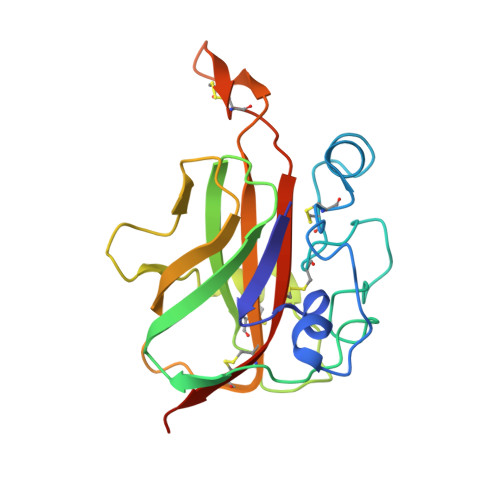An ancient family of lytic polysaccharide monooxygenases with roles in arthropod development and biomass digestion.
Sabbadin, F., Hemsworth, G.R., Ciano, L., Henrissat, B., Dupree, P., Tryfona, T., Marques, R.D.S., Sweeney, S.T., Besser, K., Elias, L., Pesante, G., Li, Y., Dowle, A.A., Bates, R., Gomez, L.D., Simister, R., Davies, G.J., Walton, P.H., Bruce, N.C., McQueen-Mason, S.J.(2018) Nat Commun 9: 756-756
- PubMed: 29472725
- DOI: https://doi.org/10.1038/s41467-018-03142-x
- Primary Citation of Related Structures:
5MSZ - PubMed Abstract:
Thermobia domestica belongs to an ancient group of insects and has a remarkable ability to digest crystalline cellulose without microbial assistance. By investigating the digestive proteome of Thermobia, we have identified over 20 members of an uncharacterized family of lytic polysaccharide monooxygenases (LPMOs). We show that this LPMO family spans across several clades of the Tree of Life, is of ancient origin, and was recruited by early arthropods with possible roles in remodeling endogenous chitin scaffolds during development and metamorphosis. Based on our in-depth characterization of Thermobia's LPMOs, we propose that diversification of these enzymes toward cellulose digestion might have endowed ancestral insects with an effective biochemical apparatus for biomass degradation, allowing the early colonization of land during the Paleozoic Era. The vital role of LPMOs in modern agricultural pests and disease vectors offers new opportunities to help tackle global challenges in food security and the control of infectious diseases.
Organizational Affiliation:
Centre for Novel Agricultural Products, Department of Biology, University of York, York, YO10 5DD, UK.
















